Gunfighting embodies the presumption things will go wrong. After all, if you’re in a gunfight, something certainly went wrong. Invariably, skills like one-handed shooting are necessary as part of the greater package of carrying a handgun defensively.
In the grand scheme, a variety of situations may force someone to use a firearm with only one hand. Humans are social creatures, and few of us live our lives in complete isolation. Furthermore, it’s difficult to be a hermit these days and not interact with people. For those of us with families, one-handed shooting is an especially important skill to develop.
Circumstances may dictate you use an offhand to control another person – be it moving, restraining, or guiding them during a lethal force encounter. For example, my children are often with me, holding my hand or being held. If I draw my firearm, their movement must be controlled, and the situation necessitates I direct them towards cover or an exit. This invariably occupies at least one of my hands while I address the lethal problem at hand.
As mentioned earlier, a shooting occurs because something has gone wrong. We failed to avoid threats in advance or it surprised us. Taking Murphy’s Law a step further, injury is likely in a violent encounter. If a limb, especially an arm, is incapacitated; this affects how we handle the problem before us. Thus, one-handed shooting is a pertinent skill in scenarios of this nature.
One-handed Shooting with Dominant Hand
One-handed shooting is not as simple as pulling the gun into your sight picture and pressing the trigger. There are mechanical considerations. The firearm is minus a support hand, and recoil isn’t managed nearly as well as it is with two hands. The body’s positioning and balance along with your arm’s orientation are important in remaining accurate while conducting rapid follow-up shots as needed.
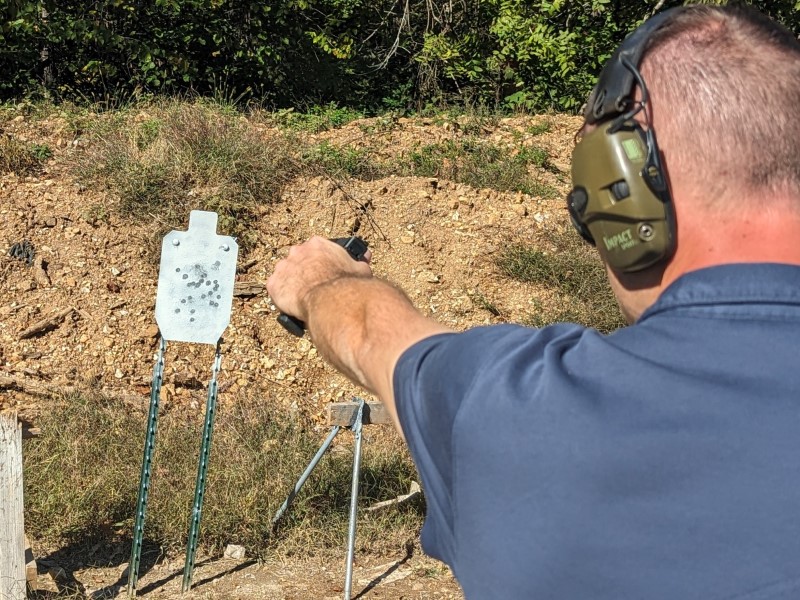
Ideally, the side holding the firearm has one foot forward of the unused side of the body. This transfers your balance forward and manages recoil. The hips are bladed slightly forward on the gun-hand side of the body. I prefer leaning my upper body slightly forward over the gun side foot. This puts more of my balance ahead of my waist and behind the gun when it recoils.
In two-handed shooting, some shooters bend their elbows in the style of a Weaver or modified Weaver shooting stance. In one-handed shooting, it’s difficult to control recoil when the elbow is bent with only one hand managing the firearm. The wrist and elbow are prone to movement. Locking the arm straight reduces this movement by locking the elbow in place. Unfortunately, this doesn’t address the recoil experienced by the wrist. This is where the firearm’s orientation becomes important.
When shooting with two hands, the shooter orients the handgun vertically. In one-handed shooting, the gun is canted towards the shooter’s non-gun hand side. I prefer an approximate midway between the vertical and horizontal. This position offers the greatest amount of control of the firearm during recoil.
One-Handed Shooting with Non-Dominant Hand
The mechanics are no different in one-handed shooting when using the non-dominant hand. However, one significant difference to consider: holsters and magazines are set up for use with the dominant hand. With the dominant hand out of play, new problems arise.
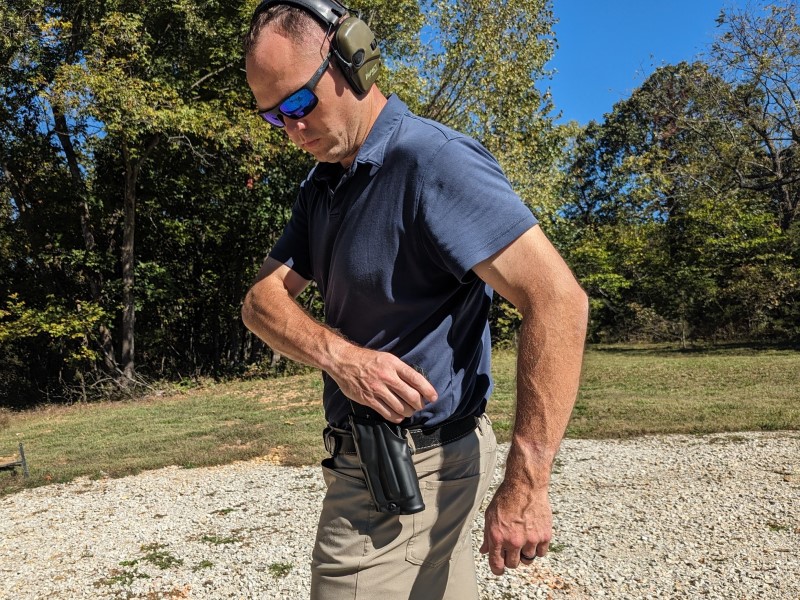
Whether carrying open or concealed, consider the importance of where your equipment is placed. Some carry positions – and retention devices – add difficulty when drawing a firearm with the non-dominant hand. Practicing with the non-dominant hand is extremely important. Be safety conscious when first doing so as dropping or fumbling the firearm is likely. Start with an unloaded handgun and work through the problems encountered. Unfortunately, not all carry positions are ideal or practical for both hands to access the firearm. The goal of practicing with the non-dominant hand is to identify these problems and address, where possible, any issues.
One Handed Reloading
Revisiting my opening comments, a gunfight occurs because something has gone wrong. A one-handed gunfight occurs because something has really gone wrong. To add to that scenario, a one-handed gunfight that requires a reload is a sign the planets have aligned against us. For purposes of brevity, this article will only discuss reloading a semi-automatic firearm.
The reload during one-handed shooting begins with learning what to do with your firearm when retrieving a magazine. If the dominant arm is still in the fight; drop the empty magazine, holster the firearm, access your spare magazine, place it into the gun, and rack the slide. There’s a multitude of methods for racking the slide. Some of the most reliable methods include using the rear sight or if equipped, optic to rack the slide against a belt, holster, or even the side of the leg.
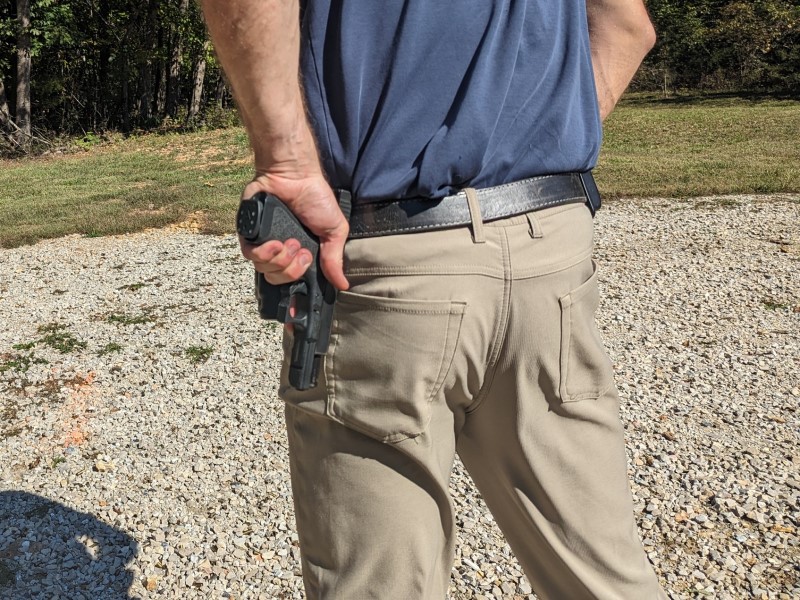
If using your non-dominant arm, re-holstering may not be an option. If the arm out of the fight can do so, stuffing the handgun under an arm is also an option. I’ve used my waistband to secure the firearm temporarily by stuffing it in my belt. This method works for me but has some safety risks attached to it. If trying this method, I strongly suggest doing so with an empty gun before attempting on the range.
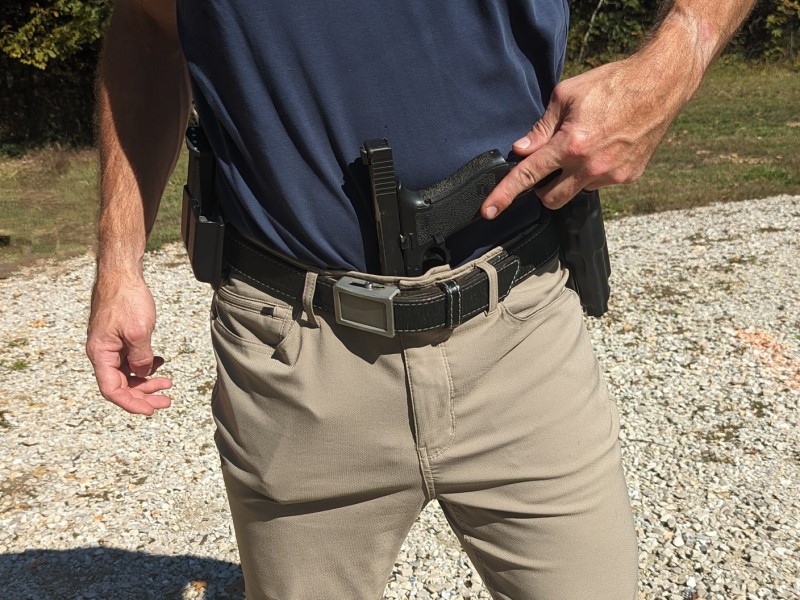
Not All Techniques are Sound for One-Handed Shooting
Over the last century, many great ideas materialized in firearm techniques and tactics. Unfortunately, some terrible ideas also appeared. One technique at the beginning of my venture firearms training has not withstood the unforgiving rigors of actual engagements: using your legs to conduct a one-handed reload. This technique, while convenient, immobilizes you. As I’ve discussed at length in previous articles, this method defeats our ability to move. Movement is life and makes you a harder target to engage. There may be an abstract circumstance where this technique is applicable. However, I’m hard-pressed to recall such a scenario.
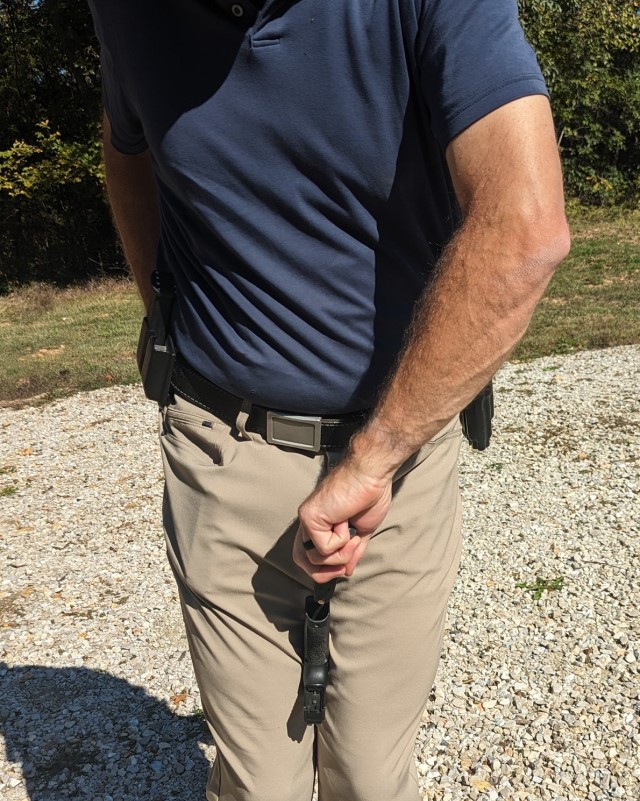
Practice Often and Train with Your Equipment
Earlier, I touched on the importance of a holster and, if equipped, a spare magazine position. If you can’t access your equipment, or never practiced doing so, that gear may be inaccessible at a critical moment of necessity.
The holster market is diverse in design, purpose, and price. Certain holsters are convenient to carry because of a small footprint or are easily removed for stowage. This is perfectly fine and understandable. However, some holsters collapse immediately upon draw and require a two-handed commitment to re-holster the firearm. In one-handed shooting, this isn’t practical nor is it feasible.
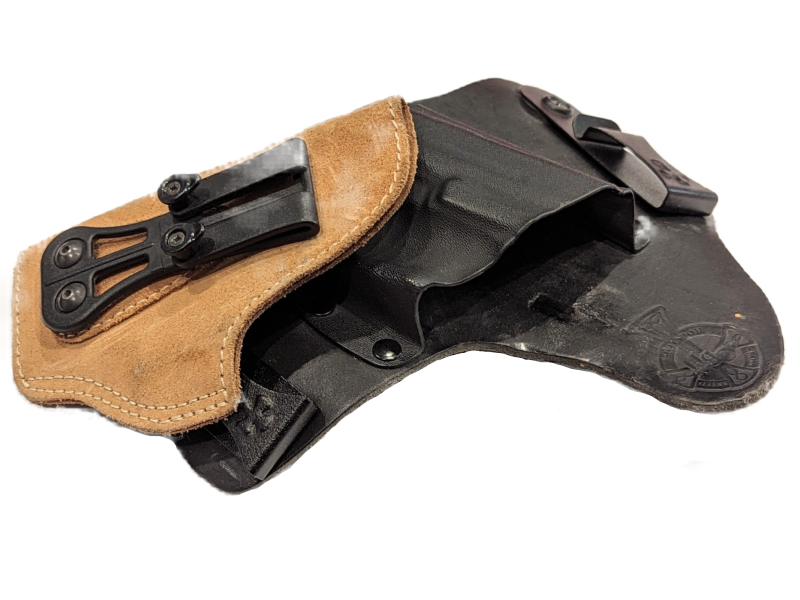
One-handed shooting isn’t hard with the proper application of fundamentals and reinforcement of good habits through training. However, shooting with one hand exposes a plethora of shortcomings many of us didn’t know existed in our training, equipment, and mindset. Practice drawing, re-holstering, and changing magazines with one hand. Practice dominant and non-dominant sides. Find what works and what doesn’t in your gear and technique. Once comfortable with these skills, integrate a new challenge or skill into one-handed shooting. For guaranteed frustration, integrate malfunction-clearing drills. Ultimately, one-handed shooting is an important skill for those of us who carry a firearm defensively. Skills like these are rarely trained but, when needed, they are life-saving.


